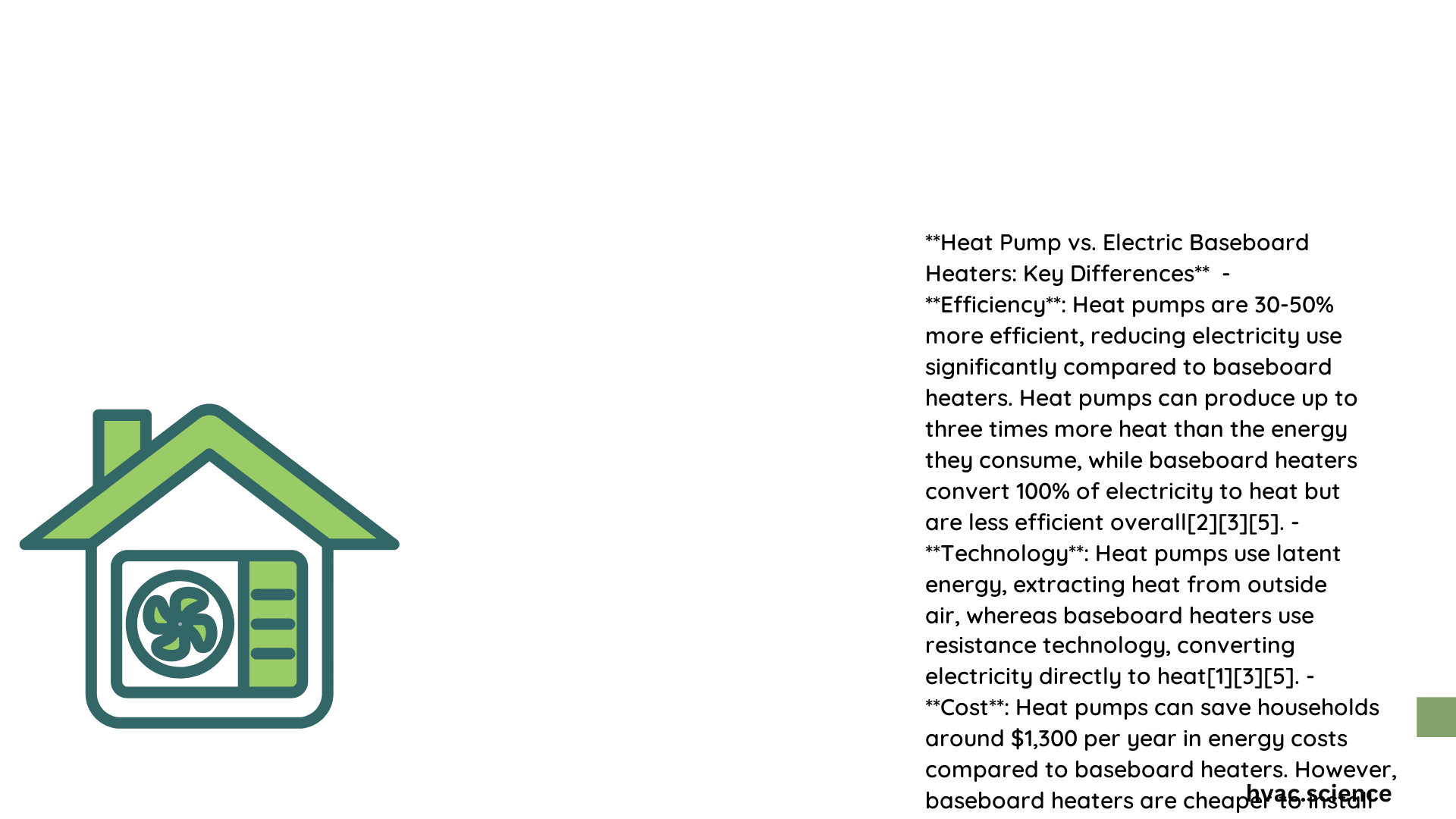When homeowners consider heating solutions, the debate between heat pump versus electric baseboard heating becomes crucial. Heat pumps offer remarkable energy efficiency, potentially reducing electricity consumption by up to 50%, while electric baseboard heaters provide straightforward, zone-specific heating. Understanding their performance, installation costs, and long-term energy implications can help make an informed decision about the most suitable home heating system.
What Makes Heat Pumps Different from Electric Baseboard Heaters?
Heat pumps and electric baseboard heaters represent two fundamentally distinct approaches to home heating. While both use electricity, their operational mechanisms and efficiency levels vary dramatically.
How Do Heat Pumps Work?
Heat pumps operate by transferring heat rather than generating it directly. They use a refrigeration cycle to:
- Extract heat from outdoor air (even in cold temperatures)
- Transfer heat indoors using a compressor and refrigerant
- Provide both heating and cooling capabilities
| Feature | Heat Pump | Electric Baseboard |
|---|---|---|
| Energy Efficiency | COP 3-4 | COP 1 |
| Installation Cost | $2,000-$14,000 | $300-$1,500 |
| Operational Cost | Lower | Higher |
| Heating/Cooling | Dual Function | Heating Only |
What Are the Key Performance Metrics?
Coefficient of Performance (COP)
- Heat Pumps: Achieve 3-4 COP
- Electric Baseboards: Limited to 1 COP
Energy Consumption
- Heat pumps can reduce electricity usage by 30-50%
- Electric baseboards consume electricity at a 1:1 ratio
What Are the Installation Considerations?
Heat Pump Installation
- Requires outdoor unit
- Minimal ductwork needed
- Flexible zoning capabilities
- Professional installation recommended
Electric Baseboard Installation
- Simple, direct wall mounting
- No external unit required
- Individual room temperature control
- Lower initial investment
How Do Maintenance Requirements Differ?
Heat Pump Maintenance
- Annual professional inspection
- Regular filter cleaning
- Refrigerant level checks
- Longer system lifespan (20-30 years)
Electric Baseboard Maintenance
- Annual dust removal
- Thermostat calibration
- Simple component replacement
- Shorter lifespan (15-25 years)
What Are the Long-Term Cost Implications?
Initial Costs
- Heat Pumps: Higher upfront investment
- Electric Baseboards: Lower initial expense
Operational Expenses
- Heat pumps offer significant long-term savings
- Electric baseboards have higher ongoing electricity costs
Can Climate Impact Heating Efficiency?
Climate plays a crucial role in heating system performance:
- Cold Regions: Heat pumps may require supplemental heating
- Moderate Climates: Optimal heat pump performance
- Warm Regions: Heat pumps excel in both heating and cooling
What Rebates and Incentives Exist?
- Heat pumps often qualify for energy efficiency rebates
- Federal and state incentives can offset installation costs
- Electric baseboard systems have fewer incentive programs
Conclusion

Choosing between heat pumps and electric baseboard heating depends on individual home requirements, budget, and local climate. While heat pumps offer superior energy efficiency and long-term savings, electric baseboards provide simplicity and lower initial costs.
Recommendations
- Assess your local climate
- Calculate long-term energy expenses
- Consider home infrastructure
- Evaluate personal comfort preferences
References:
– Mitsubishi Comfort
– Sealed Energy Efficiency
– DELCO HVAC
